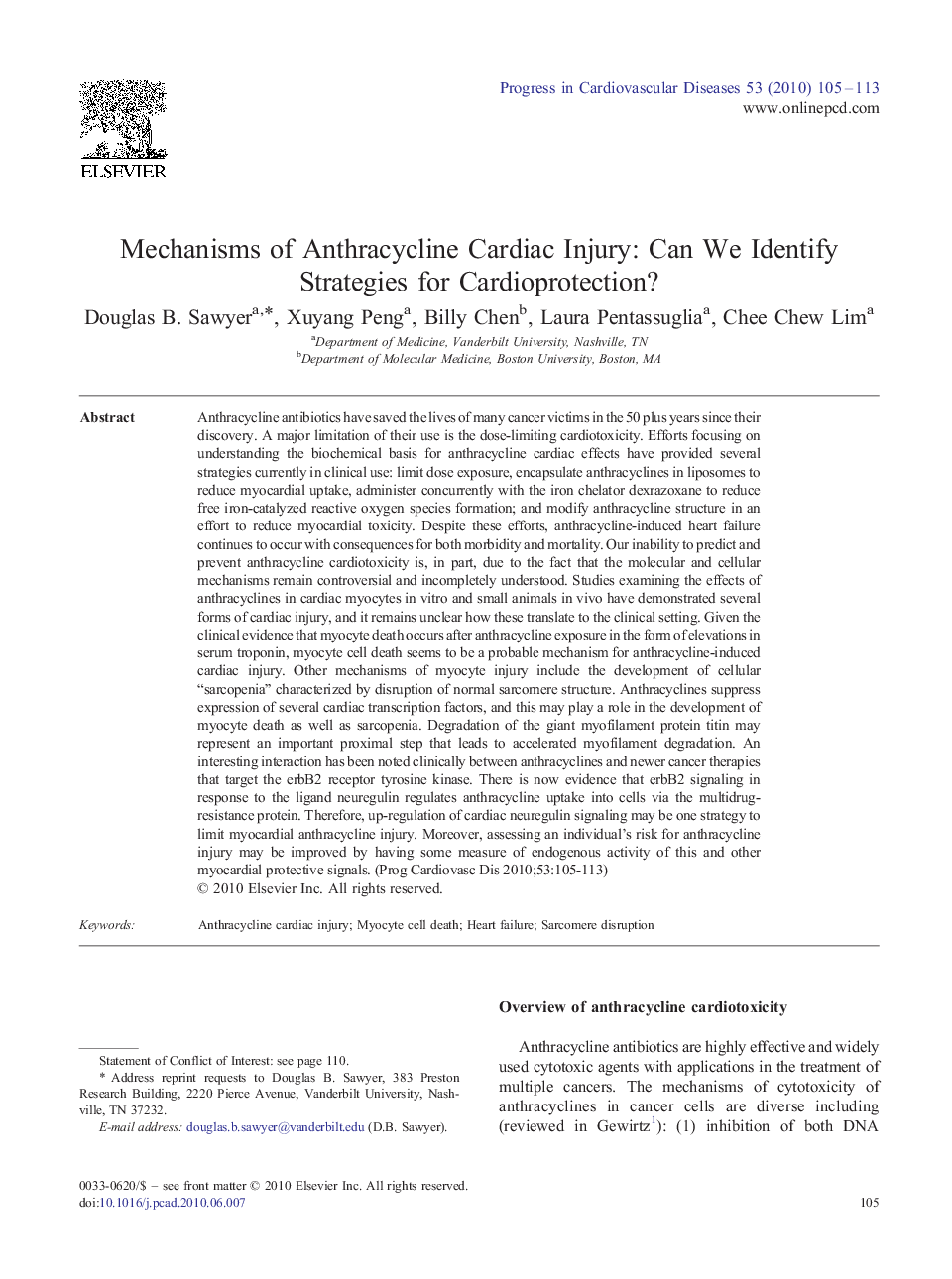| کد مقاله | کد نشریه | سال انتشار | مقاله انگلیسی | نسخه تمام متن |
|---|---|---|---|---|
| 3006898 | 1181016 | 2010 | 9 صفحه PDF | دانلود رایگان |

Anthracycline antibiotics have saved the lives of many cancer victims in the 50 plus years since their discovery. A major limitation of their use is the dose-limiting cardiotoxicity. Efforts focusing on understanding the biochemical basis for anthracycline cardiac effects have provided several strategies currently in clinical use: limit dose exposure, encapsulate anthracyclines in liposomes to reduce myocardial uptake, administer concurrently with the iron chelator dexrazoxane to reduce free iron-catalyzed reactive oxygen species formation; and modify anthracycline structure in an effort to reduce myocardial toxicity. Despite these efforts, anthracycline-induced heart failure continues to occur with consequences for both morbidity and mortality. Our inability to predict and prevent anthracycline cardiotoxicity is, in part, due to the fact that the molecular and cellular mechanisms remain controversial and incompletely understood. Studies examining the effects of anthracyclines in cardiac myocytes in vitro and small animals in vivo have demonstrated several forms of cardiac injury, and it remains unclear how these translate to the clinical setting. Given the clinical evidence that myocyte death occurs after anthracycline exposure in the form of elevations in serum troponin, myocyte cell death seems to be a probable mechanism for anthracycline-induced cardiac injury. Other mechanisms of myocyte injury include the development of cellular “sarcopenia” characterized by disruption of normal sarcomere structure. Anthracyclines suppress expression of several cardiac transcription factors, and this may play a role in the development of myocyte death as well as sarcopenia. Degradation of the giant myofilament protein titin may represent an important proximal step that leads to accelerated myofilament degradation. An interesting interaction has been noted clinically between anthracyclines and newer cancer therapies that target the erbB2 receptor tyrosine kinase. There is now evidence that erbB2 signaling in response to the ligand neuregulin regulates anthracycline uptake into cells via the multidrug-resistance protein. Therefore, up-regulation of cardiac neuregulin signaling may be one strategy to limit myocardial anthracycline injury. Moreover, assessing an individual's risk for anthracycline injury may be improved by having some measure of endogenous activity of this and other myocardial protective signals.
Journal: Progress in Cardiovascular Diseases - Volume 53, Issue 2, September–October 2010, Pages 105–113